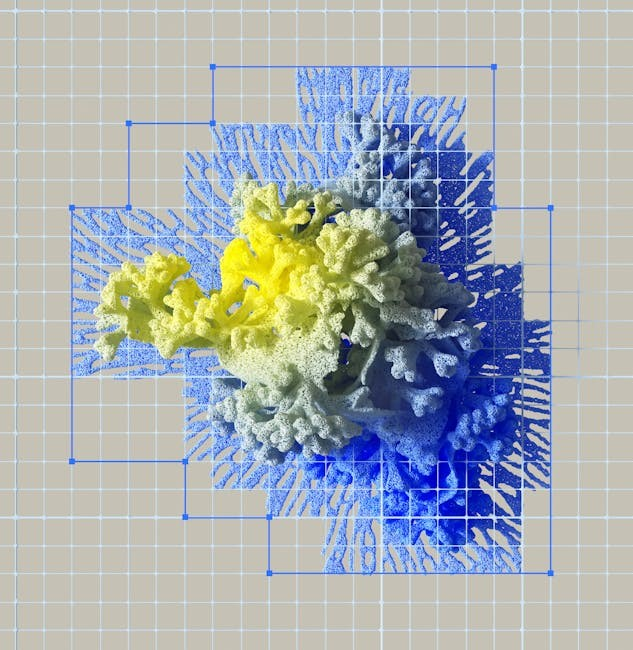The Neonatal Resuscitation Program (NRP) Algorithm 2023 provides evidence-based guidelines for healthcare providers to resuscitate newborns effectively. It emphasizes the golden minute‚ proper ventilation‚ and sequential interventions to ensure optimal outcomes.
1.1 Overview of the Neonatal Resuscitation Program (NRP)
The Neonatal Resuscitation Program (NRP) is a standardized approach to guide healthcare providers in resuscitating newborns requiring assistance at birth. It emphasizes evidence-based practices to ensure optimal outcomes. The program is designed for neonatologists‚ nurses‚ and other healthcare professionals involved in delivery room care. The NRP algorithm provides a structured framework‚ starting with initial assessment‚ preparation‚ and progressing to interventions like positive pressure ventilation and chest compressions. It also highlights the critical “Golden Minute” and the importance of timely‚ effective actions to support neonatal transition. Regular updates ensure alignment with the latest scientific evidence and clinical practices.
1.2 Importance of the NRP Algorithm in 2023
The NRP Algorithm 2023 is crucial for standardizing neonatal resuscitation practices‚ ensuring consistency and efficacy in newborn care. It integrates the latest evidence-based guidelines‚ addressing advancements in techniques and technologies. This update emphasizes the critical “Golden Minute‚” optimal ventilation strategies‚ and personalized approaches for at-risk infants. By aligning with current research‚ the 2023 algorithm enhances clinical decision-making‚ reducing morbidity and mortality rates. It serves as a vital tool for healthcare providers‚ promoting improved neonatal outcomes and adherence to best practices globally in 2023.
1.3 Key Updates in the 2023 Guidelines
The 2023 NRP Guidelines introduce updates based on systematic reviews‚ enhancing techniques like PPV‚ chest compressions‚ and CPAP use. These evidence-based changes improve neonatal outcomes by ensuring timely interventions during the golden minute‚ aligning with best practices‚ and integrating new technologies to reduce morbidity and mortality effectively.

Structure of the NRP Algorithm
The NRP Algorithm 2023 is structured to guide neonatal resuscitation‚ starting with the golden minute‚ initial assessment‚ and sequential steps‚ ensuring effective and timely interventions for newborns in distress.
2.1 Initial Assessment of the Neonate
The initial assessment of the neonate begins with evaluating vital signs‚ such as heart rate‚ respiratory effort‚ and color. This step determines if resuscitation is needed. Providers check for signs of distress‚ like grunting or flaring‚ and assess the newborn’s overall condition. The American Academy of Pediatrics (AAP) guidelines emphasize the importance of a quick and accurate evaluation to guide immediate interventions. This assessment sets the stage for the subsequent steps in the resuscitation process‚ ensuring timely and appropriate care.
2.2 Preparation and Equipment Setup
Preparation and equipment setup are critical for effective neonatal resuscitation. Essential tools include a radiant warmer‚ stethoscope‚ suction device‚ and respiratory support equipment like a T-piece or bag-valve-mask. Ensure all devices are within reach and function-tested. The environment should be warm‚ with appropriate lighting. Providers must be familiar with the equipment and its operation. Proper setup ensures rapid response during the golden minute‚ allowing for immediate intervention with positive pressure ventilation (PPV) or chest compressions if needed. Readiness is key to optimizing outcomes for the newborn.
2.3 The Golden Minute: First Minute of Life
The Golden Minute is the first minute after birth‚ critical for neonatal resuscitation. It focuses on initial assessment‚ drying‚ and stimulating the newborn to initiate breathing. Providers should open the airway‚ clear secretions if needed‚ and provide positive pressure ventilation (PPV) if the heart rate remains low. This period also involves evaluating the need for chest compressions or other interventions. The goal is to ensure cardiorespiratory adaptation and prevent hypoxia. Effective actions during this minute significantly impact outcomes‚ emphasizing the importance of timely and skilled intervention.
2.4 Sequential Steps in the Resuscitation Process
The resuscitation process follows a structured sequence to ensure effectiveness. After the Golden Minute‚ providers assess heart rate and respiratory effort. If heart rate is below 60 bpm‚ positive pressure ventilation (PPV) is initiated. If ineffective‚ chest compressions are started‚ with a 3:1 ratio of compressions to ventilations. Medications like epinephrine may be administered if there’s no improvement. Continuous monitoring and adjustments are crucial‚ with clear communication among the team. This step-by-step approach ensures timely and appropriate interventions‚ maximizing the likelihood of a successful outcome for the newborn.

Key Steps in the NRP Algorithm
The NRP Algorithm 2023 outlines critical interventions: positive pressure ventilation‚ heart rate evaluation‚ chest compressions‚ medication administration‚ and termination criteria‚ ensuring systematic neonatal resuscitation.
3.1 Positive Pressure Ventilation (PPV)
Positive Pressure Ventilation (PPV) is a cornerstone of neonatal resuscitation in the 2023 NRP Algorithm. It involves providing breaths with a ventilator or bag-valve-mask device to support newborns with inadequate breathing. Proper technique ensures effective gas exchange‚ maintaining adequate oxygenation and ventilation. The algorithm recommends initiating PPV if the infant’s heart rate remains below 100 bpm despite initial stimulation and drying. Correct mask seal‚ rate‚ and pressure are emphasized to avoid lung injury. PPV is guided by clinical assessment and continuous monitoring of the infant’s response. This step is critical in the first minute of life‚ known as the golden minute‚ where timely intervention significantly impacts outcomes. Healthcare providers are trained to deliver PPV effectively‚ adapting to the infant’s needs and ensuring minimal disruption to the transition from fetal to neonatal life.
3.2 Evaluation of Heart Rate and Respiratory Effort
Evaluation of heart rate and respiratory effort is a critical step in the NRP Algorithm 2023. After initial stimulation and positive pressure ventilation (PPV)‚ assess the infant’s heart rate and breathing. If the heart rate remains below 100 bpm‚ continue PPV and consider additional interventions. Respiratory effort is evaluated for adequacy‚ ensuring effective ventilation. Continuous monitoring guides the progression of resuscitation‚ ensuring interventions are tailored to the infant’s needs. This step emphasizes the importance of timely and accurate assessment to support the transition from fetal to neonatal life.
3.3 Chest Compressions: Technique and Timing
Chest compressions in the NRP Algorithm 2023 are performed when a newborn’s heart rate remains below 60 bpm despite adequate ventilation. The recommended technique involves placing the thumbs on the center of the chest‚ with fingers supporting the back. Compressions should be at a depth of 1/4 to 1/3 of the chest cavity. The ratio is 3:1 compressions to ventilations‚ with a target rate of 90-100 compressions per minute. Proper timing ensures synchronized delivery with ventilations‚ maximizing effective circulation. Improper technique can cause harm‚ so adherence to guidelines is critical for safe and effective resuscitation.
- The chest compression depth for newborns is 1/4 to 1/3 of the chest cavity.
- Compressions are synchronized with ventilations at a 3:1 ratio.
- The target compression rate is 90-100 per minute.
- Proper hand positioning is essential to avoid injury.
3.4 Administration of Medications
In the NRP Algorithm 2023‚ medications are administered when a newborn’s heart rate remains low despite effective chest compressions and ventilation. Epinephrine is the primary medication used‚ typically administered intravenously or intraosseously at a dose of 0.01-0.03 mg/kg. It is crucial to ensure proper preparation‚ dosing‚ and administration techniques. Medications should only be given by trained healthcare providers‚ and their effects must be closely monitored. Documentation of medication administration is essential for continuity of care and legal compliance.
- Epinephrine is the primary medication for neonatal resuscitation.
- Administer via IV or IO at 0.01-0.03 mg/kg.
- Ensure accurate dosing and proper technique.
- Monitor response and document administration.
3.5 Termination of Resuscitation Efforts
In the NRP Algorithm 2023‚ termination of resuscitation efforts is considered when there is no return of spontaneous circulation despite adherence to the structured approach. The decision to stop resuscitation is based on clinical judgment and the absence of heart rate after prolonged efforts. Ethical considerations‚ including the infant’s prognosis and parental wishes‚ are integral to this decision. Documentation of the resuscitation process and the rationale for termination is essential for transparency and accountability.
- Termination is considered when there is no heart rate after prolonged resuscitation.
- Clinical judgment and ethical considerations guide the decision.
- Parental wishes and infant prognosis are key factors.
- Accurate documentation is required for accountability.

2023 Updates and Evidence-Based Changes
The 2023 NRP Algorithm updates are based on systematic reviews‚ emphasizing CPAP‚ optimized PPV‚ and refined chest compression techniques‚ ensuring evidence-based‚ personalized neonatal resuscitation care.
4.1 Systematic Reviews Influencing the 2023 Guidelines
The 2023 NRP Algorithm updates were informed by four systematic reviews‚ focusing on CPAP‚ positive pressure ventilation‚ and chest compression techniques. These reviews emphasized evidence-based practices‚ such as optimizing CPAP use in preterm infants and refining ventilation strategies to improve outcomes. The guidelines also highlight the importance of personalized care‚ ensuring interventions align with individual neonatal needs. This approach reflects a commitment to translating cutting-edge research into clinical practice‚ enhancing the safety and effectiveness of neonatal resuscitation worldwide.
4.2 Advances in Neonatal Resuscitation Techniques
The 2023 NRP Algorithm incorporates advanced techniques to improve neonatal resuscitation outcomes. Continuous positive airway pressure (CPAP) is now widely recommended for preterm infants‚ reducing bronchopulmonary dysplasia risk. Enhanced ventilation strategies emphasize maintaining optimal oxygen levels and minimizing lung injury. Chest compression techniques have been refined for better efficacy‚ with a focus on coordinated compressions and ventilations. Additionally‚ the integration of new technologies‚ such as oxygen saturation monitoring and automated compression devices‚ has streamlined resuscitation processes‚ ensuring more precise and timely interventions.
4.3 Incorporation of New Technologies in NRP
The 2023 NRP Algorithm integrates advanced technologies to enhance neonatal resuscitation. Portable oxygen saturation monitors enable real-time monitoring‚ ensuring precise titration of oxygen therapy. Automated chest compression devices maintain consistent compression rates and depths‚ improving cardiac output. Additionally‚ the use of video laryngoscopy aids in difficult intubations‚ while digital ventilation devices provide accurate breath delivery. These innovations improve efficiency and standardization‚ helping healthcare providers deliver high-quality care during critical moments. The integration of these tools aligns with evidence-based practices‚ fostering better neonatal outcomes.

Training and Certification in NRP Algorithm 2023
The NRP Learning Platform offers interactive modules‚ simulation-based training‚ and virtual workshops to ensure healthcare providers master the 2023 algorithm’s evidence-based practices and techniques effectively.
5.1 Overview of the NRP Learning Platform
The NRP Learning Platform is a comprehensive online tool designed to facilitate mastery of the 2023 NRP Algorithm. It offers interactive modules‚ video demonstrations‚ and real-life case scenarios to enhance learning. The platform provides a structured approach‚ allowing healthcare providers to complete self-paced lessons‚ track progress‚ and participate in simulation-based training. Additionally‚ it hosts a master calendar for instructor-led events‚ enabling users to join live sessions and workshops. This platform ensures that all participants are well-prepared for certification and can apply the latest resuscitation techniques effectively in clinical settings.
5.2 Instructor-Led Training and Events
Instructor-Led Training (ILT) and events play a crucial role in the NRP Algorithm 2023. These sessions are conducted by certified experts and provide hands-on practice‚ case discussions‚ and real-life simulations. ILT events are scheduled through the NRP Learning Platform‚ allowing participants to interact directly with instructors. These sessions enhance understanding of the algorithm‚ improve technical skills‚ and build confidence in high-stakes situations. They also offer opportunities for feedback and networking with peers‚ ensuring a comprehensive learning experience that aligns with the latest guidelines and evidence-based practices in neonatal resuscitation.
5.3 Certification Requirements and Renewal Process
Certification in the NRP Algorithm 2023 requires completion of online modules‚ hands-on simulation training‚ and successful passage of a final exam. Renewal occurs every two years‚ ensuring providers stay updated with the latest guidelines. The process involves continuing education‚ recertification exams‚ and demonstration of proficiency in resuscitation skills. The NRP Learning Platform tracks progress‚ and certification must be maintained to ensure competency in neonatal care. This structured approach guarantees consistent‚ high-quality application of the NRP Algorithm in clinical settings‚ reflecting the most current evidence-based practices.

Clinical Applications of the NRP Algorithm
The NRP Algorithm 2023 is crucial in clinical settings‚ guiding healthcare providers through neonatal resuscitation with evidence-based steps‚ ensuring timely and effective interventions for newborns in distress.
6.1 Delivery Room Preparedness and Response
Delivery room preparedness is critical for effective neonatal resuscitation. The NRP Algorithm 2023 emphasizes the golden minute‚ ensuring immediate actions like positive pressure ventilation (PPV) and chest compressions are ready. Healthcare teams must assess the neonate’s condition rapidly‚ using tools like heart rate and respiratory effort evaluation. Essential equipment‚ such as PPV devices and suction‚ should be pretested. A coordinated response ensures timely interventions‚ minimizing delays. The algorithm also stresses maintaining a warm environment to prevent hypothermia. Proper training and drills enhance the team’s ability to respond efficiently‚ aligning with the 2023 guidelines’ focus on preparedness and swift action.
6.2 Post-Resuscitation Care and Stabilization
Post-resuscitation care focuses on stabilizing the neonate after successful revival. The 2023 NRP Algorithm underscores the importance of maintaining a warm environment‚ monitoring oxygen saturation‚ and ensuring proper ventilation. Continuous assessment of heart rate‚ respiratory effort‚ and color is crucial. Hypoglycemia prevention and neurological evaluation are key. The algorithm recommends transitioning to continuous positive airway pressure (CPAP) if needed and preparing for transfer to a neonatal intensive care unit (NICU). Documentation of resuscitation efforts and communication with the care team are emphasized to ensure seamless ongoing management and improved long-term outcomes for the infant.
6.3 Integration with Other Neonatal Care Protocols
The NRP Algorithm 2023 is designed to integrate seamlessly with other neonatal care protocols‚ ensuring a comprehensive approach to newborn care. It aligns with guidelines for temperature control‚ glucose management‚ and infection prevention. The algorithm emphasizes the importance of a coordinated team approach‚ combining resuscitation efforts with post-resuscitation care and stabilisation. This integration ensures that healthcare providers can transition smoothly from emergency interventions to routine neonatal care practices; The 2023 updates highlight the need for a holistic strategy‚ incorporating evidence-based practices to improve outcomes for newborns in both delivery and post-delivery settings.

Challenges and Controversies in NRP 2023
The NRP Algorithm 2023 faces challenges‚ including ethical dilemmas in resuscitation decisions and variability in implementation across institutions. Balancing interventions with infant comfort remains contentious.
7.1 Ethical Considerations in Neonatal Resuscitation
Ethical considerations in neonatal resuscitation involve balancing benefits and harms‚ respecting parental autonomy‚ and addressing disparities in care access. The 2023 NRP Algorithm emphasizes evidence-based practices while ensuring ethical decision-making‚ particularly in cases of extreme prematurity or congenital anomalies. Providers must navigate complex situations‚ considering the infant’s best interests and parental values. Training programs now include ethical frameworks to guide clinicians in these challenging scenarios‚ promoting compassionate and individualized care.
7.2 Variability in Implementation Across Institutions
Variability in implementing the 2023 NRP Algorithm exists across institutions due to differences in resources‚ training‚ and institutional protocols. While guidelines are standardized‚ their application varies‚ impacting outcomes and provider confidence. The NRP Learning Platform and instructor-led training aim to reduce this variability by promoting consistent practices. However‚ challenges persist‚ particularly in low-resource settings. Addressing these disparities is crucial for ensuring equitable neonatal care and improving resuscitation outcomes worldwide. Standardized protocols and ongoing education are key to minimizing variability and enhancing the quality of care;
7.3 Balancing Interventions with infant Comfort
7.3 Balancing Interventions with Infant Comfort
Balancing interventions with infant comfort is a critical aspect of the 2023 NRP Algorithm. The guidelines emphasize minimizing stress and pain during resuscitation while ensuring effective care. Techniques such as gentle handling‚ appropriate use of suctioning‚ and avoiding excessive stimulation are recommended. Ethical considerations highlight the importance of prioritizing the infant’s well-being alongside medical interventions. The algorithm also addresses the need for pain management during procedures like intubation. By integrating comfort measures‚ healthcare providers can optimize outcomes while respecting the infant’s physiological and emotional needs‚ aligning with the latest evidence-based practices in neonatal care.

Accessories and Tools for NRP Algorithm 2023
Essential accessories include CPAP devices‚ oxygen therapy equipment‚ and monitoring tools. These tools support effective resuscitation by maintaining airway pressure‚ ensuring adequate oxygenation‚ and monitoring vital signs.
8.1 Essential Equipment for Neonatal Resuscitation
The resuscitation process requires a well-prepared setup‚ including a resuscitation trolley‚ laryngoscope‚ endotracheal tubes‚ and a syringe for medication administration. A reliable oxygen source and ventilation devices‚ such as bag-valve-mask (BVM) devices‚ are critical. Additional tools like suction catheters‚ gloves‚ and towels are essential for maintaining a clean and effective environment. Temperature control equipment‚ such as radiant warmers‚ helps stabilize the neonate. Monitoring devices‚ including pulse oximeters‚ ensure proper oxygenation and heart rate assessment‚ making them indispensable in the resuscitation process.
8.2 Role of CPAP in the Resuscitation Process
Continuous Positive Airway Pressure (CPAP) plays a pivotal role in neonatal resuscitation by providing non-invasive respiratory support. It helps maintain airway patency‚ reduces work of breathing‚ and prevents alveolar collapse‚ especially in preterm infants. CPAP is initiated early in the resuscitation process‚ often during the golden minute‚ to stabilize breathing and improve oxygenation. Its use aligns with the 2023 NRP guidelines‚ emphasizing the importance of non-invasive ventilation strategies to minimize lung injury and promote physiological stability‚ making it a cornerstone in modern neonatal resuscitation practices.
8.3 Use of Oxygen Therapy and Monitoring Devices
Oxygen therapy is judiciously used in neonatal resuscitation to maintain target oxygen saturation levels‚ typically between 90-95%. Monitoring devices‚ such as pulse oximeters‚ are essential for real-time assessment of oxygenation and heart rate. The 2023 NRP guidelines emphasize titrating oxygen to avoid hyperoxia‚ which can cause oxidative stress. Additionally‚ capnography is employed to assess ventilation effectiveness‚ ensuring proper end-tidal CO2 levels. These tools enhance precision in resuscitation‚ supporting the shift toward evidence-based‚ individualized care for newborns‚ as outlined in the latest updates.

Historical Evolution of the NRP Algorithm
The NRP Algorithm originated in the 1980s‚ evolving significantly over the decades. The 2023 edition‚ now in its 8th iteration‚ incorporates systematic reviews and evidence-based medicine.
9.1 Development of NRP Guidelines Over the Years
The Neonatal Resuscitation Program (NRP) guidelines have evolved since their inception in the 1980s. Initially focused on basic life support‚ they expanded to include evidence-based practices. The 2023 guidelines mark the 8th edition‚ incorporating systematic reviews and advances in neonatal care. These updates ensure healthcare providers have the most effective strategies for newborn resuscitation‚ reflecting ongoing research and clinical expertise to improve outcomes.
9.2 Comparison of 2023 Updates with Previous Editions
The 2023 NRP guidelines introduce significant updates compared to earlier editions‚ focusing on evidence-based practices. The 8th edition emphasizes non-invasive ventilation techniques‚ such as CPAP‚ and refined oxygen therapy protocols. Unlike previous versions‚ the 2023 guidelines incorporate findings from systematic reviews‚ enhancing the role of heart rate monitoring and ventilation strategies. These updates reflect advancements in neonatal care‚ ensuring more effective and personalized resuscitation approaches for healthcare providers.
9.3 Impact of Past Research on Current Practices
Past research has significantly influenced the development of the NRP Algorithm 2023. Studies on ventilation strategies‚ oxygen therapy‚ and heart rate monitoring have shaped evidence-based guidelines. Early investigations into continuous positive airway pressure (CPAP) and positive pressure ventilation (PPV) laid the groundwork for current practices. Research on neonatal physiology and resuscitation outcomes has refined techniques‚ ensuring safer and more effective interventions. These findings have been integrated into training programs‚ enhancing the skills of healthcare providers and improving neonatal care worldwide.

Future Directions in Neonatal Resuscitation
Future directions in neonatal resuscitation focus on integrating new technologies and personalized care approaches. Simulation-based training and AI-driven tools will enhance provider skills. Global collaboration will standardize practices‚ improving outcomes worldwide.
10.1 Emerging Trends in NRP and Resuscitation Science
Emerging trends in NRP include advanced ventilation techniques‚ personalized resuscitation strategies‚ and the use of real-time monitoring devices. These innovations aim to enhance neonatal outcomes by tailoring interventions to individual needs. Additionally‚ simulation-based training and AI-driven tools are being integrated to improve skill retention and decision-making during critical moments. Such advancements highlight the evolution of NRP towards more precise and effective resuscitation practices‚ ensuring better care for newborns in distress.
10.2 Potential Advances in Training and Technology
Future advancements in NRP training may include immersive simulation technologies and AI-driven platforms for personalized learning. Virtual reality (VR) and augmented reality (AR) could enhance hands-on practice‚ while AI algorithms might analyze performance and provide real-time feedback. Additionally‚ mobile learning platforms could increase accessibility for healthcare providers worldwide. Technological innovations such as automated ventilation devices and real-time oxygen monitoring systems are expected to improve resuscitation outcomes. These tools will empower providers with cutting-edge skills and resources‚ ensuring higher standards of neonatal care.
10;3 Global Standardization of NRP Practices
Global standardization of NRP practices aims to ensure consistent‚ high-quality neonatal care worldwide. The 2023 guidelines emphasize universal training protocols and certification processes‚ enabling healthcare providers across diverse settings to follow the same evidence-based procedures. This standardization addresses disparities in resources and training‚ promoting equitable outcomes for newborns globally. Collaborative efforts between international organizations and local health systems are crucial for widespread adoption and adherence to these standardized practices‚ ultimately reducing neonatal mortality and improving long-term health outcomes.
The NRP Algorithm 2023 provides essential guidelines for neonatal resuscitation‚ ensuring evidence-based practices and improved outcomes. Its updates and global standardization highlight the crucial role of healthcare providers in implementation.
11.1 Summary of Key Points in the NRP Algorithm 2023
The 2023 NRP Algorithm emphasizes the golden minute‚ initiating positive pressure ventilation (PPV) at one minute of life. It highlights sequential steps‚ including heart rate evaluation‚ chest compressions‚ and medication administration. Updated guidelines incorporate evidence-based practices‚ focusing on minimizing oxygen exposure and optimizing respiratory support. The algorithm underscores the importance of preparation‚ equipment readiness‚ and continuous assessment. Training and certification are crucial for healthcare providers to master these techniques. These updates aim to enhance neonatal outcomes‚ ensuring standardized and effective resuscitation practices globally.
11.2 The Role of Healthcare Providers in Implementation
Healthcare providers play a critical role in implementing the NRP Algorithm 2023. They must stay updated with the latest guidelines‚ ensuring evidence-based practices are applied. Proper training and certification are essential to master techniques like PPV‚ chest compressions‚ and medication administration. Effective communication and teamwork are vital during resuscitation. Providers should continuously assess the neonate’s response and adapt interventions accordingly. Their dedication to these protocols ensures the best possible outcomes for newborns in distress‚ highlighting the importance of their expertise and commitment to neonatal care.
11.3 Final Thoughts on the Importance of NRP 2023
The NRP Algorithm 2023 is a cornerstone of neonatal care‚ providing evidence-based guidance to improve outcomes for newborns. Its structured approach ensures timely and effective interventions‚ emphasizing the golden minute and proper ventilation techniques. By adhering to these guidelines‚ healthcare providers can deliver standardized‚ high-quality resuscitation care. The algorithm’s updates reflect the latest research‚ making it indispensable for clinicians. Ultimately‚ the NRP Algorithm 2023 underscores the critical role of preparedness‚ skill‚ and teamwork in saving lives and reducing neonatal mortality‚ solidifying its importance in modern healthcare.

Leave a Reply
You must be logged in to post a comment.